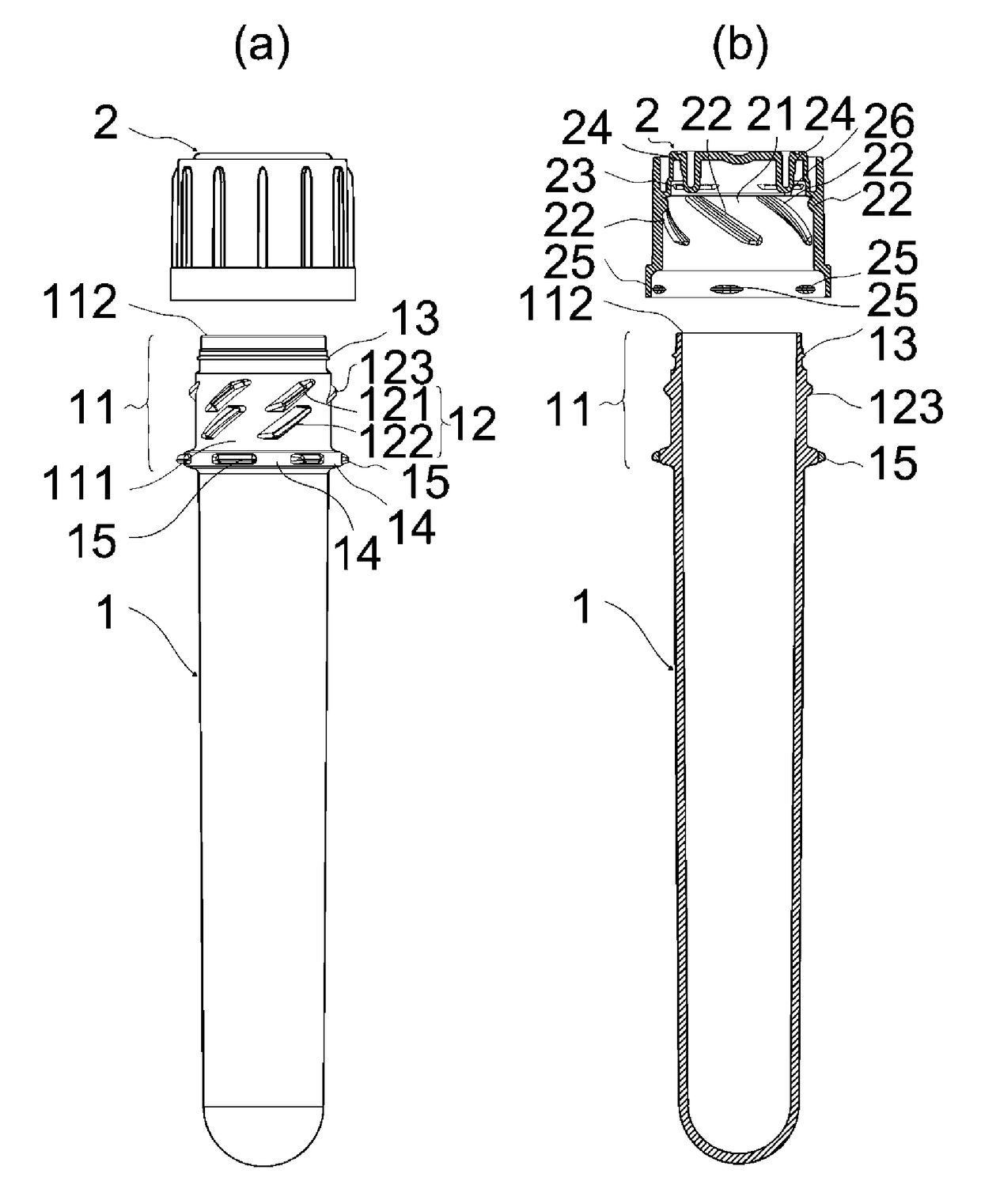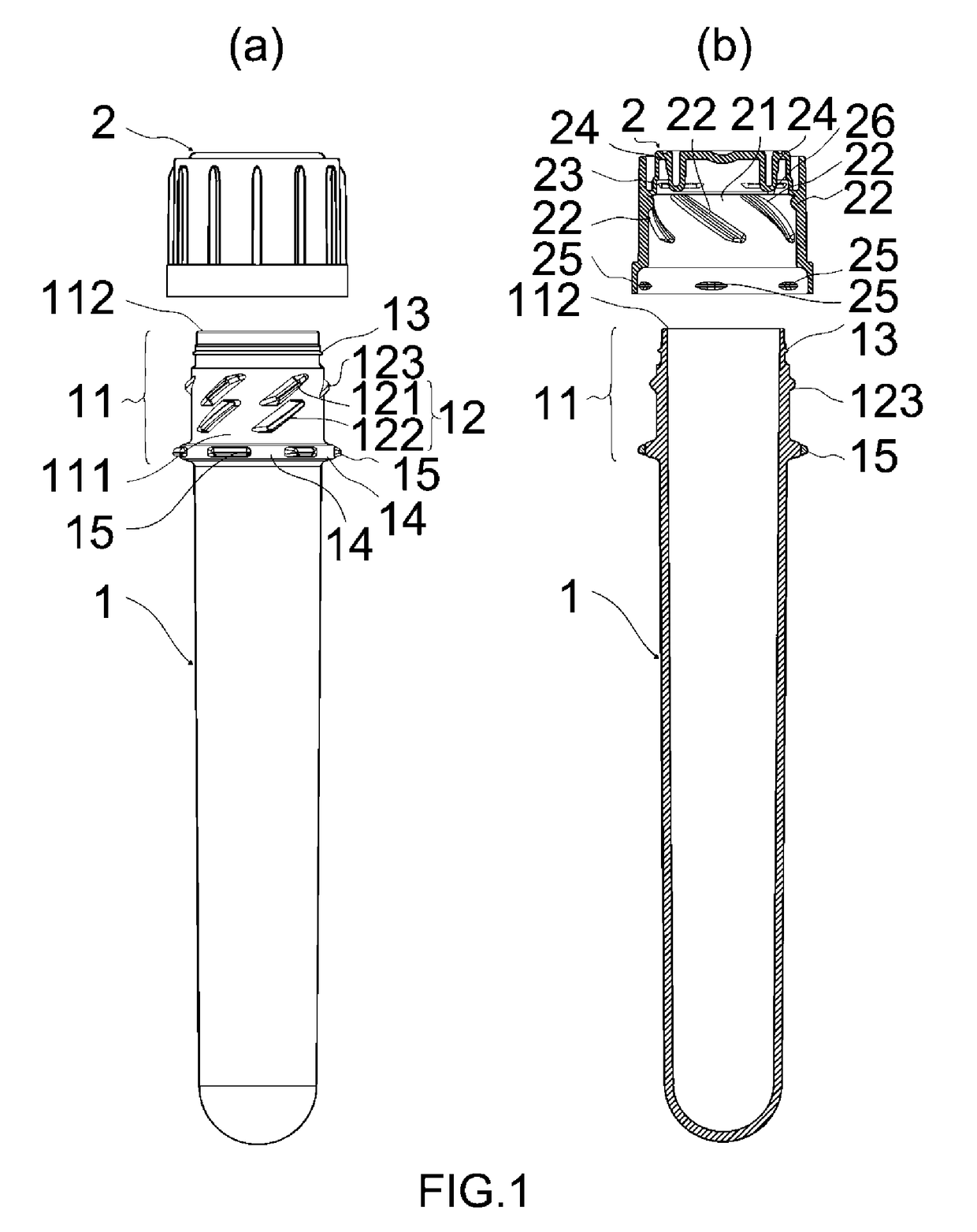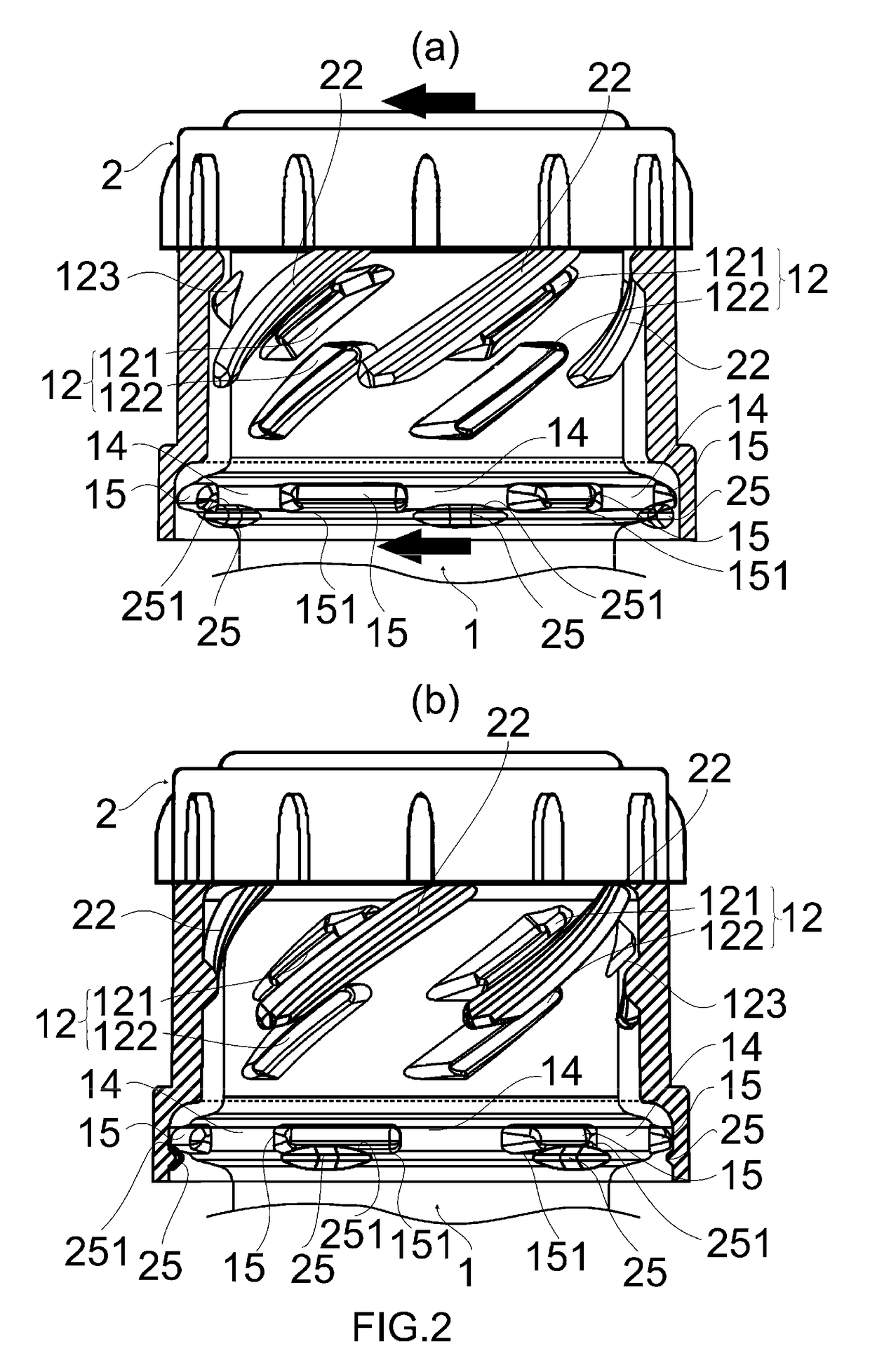Capped container
a container and cap technology, applied in the field of caps, can solve the problems of reducing the friction resistance of the screws, affecting the sealing performance, and the risk of the cap coming off, and achieve the effects of preventing leakage of contents, quick opening and closing, and less rotation
- Summary
- Abstract
- Description
- Claims
- Application Information
AI Technical Summary
Benefits of technology
Problems solved by technology
Method used
Image
Examples
Embodiment Construction
[0027]A preferred embodiment of the present invention will be described below in detail.
[0028]FIGS. 1(a) and 1(b) illustrate the preferred embodiment of the present invention. A basic configuration includes, as with a capped container in the related art, a container body 1 which has a bottom, a top surface opened, and outer screws 12 formed on an outer peripheral surface 111 of a head section 11, and a cap 2 which has inner screws 22 to be threadedly engaged with the outer screws 12, screwed and fastened on an inner peripheral surface 21, and is placed and removed by screw-fitting, wherein an opening end 112 of the head section 11 of the container body 1 closely contacts a top inner surface 24 of the cap 2, when the cap 2 is placed on the head section 11 of the container body 1.
[0029]The inner screws 22 formed on the inner peripheral surface 21 of the cap 2 are inward multiple thread screws 221 . . . 221 arranged at predetermined distance and angle with six arranged at equal distanc...
PUM
 Login to View More
Login to View More Abstract
Description
Claims
Application Information
 Login to View More
Login to View More - R&D
- Intellectual Property
- Life Sciences
- Materials
- Tech Scout
- Unparalleled Data Quality
- Higher Quality Content
- 60% Fewer Hallucinations
Browse by: Latest US Patents, China's latest patents, Technical Efficacy Thesaurus, Application Domain, Technology Topic, Popular Technical Reports.
© 2025 PatSnap. All rights reserved.Legal|Privacy policy|Modern Slavery Act Transparency Statement|Sitemap|About US| Contact US: help@patsnap.com



